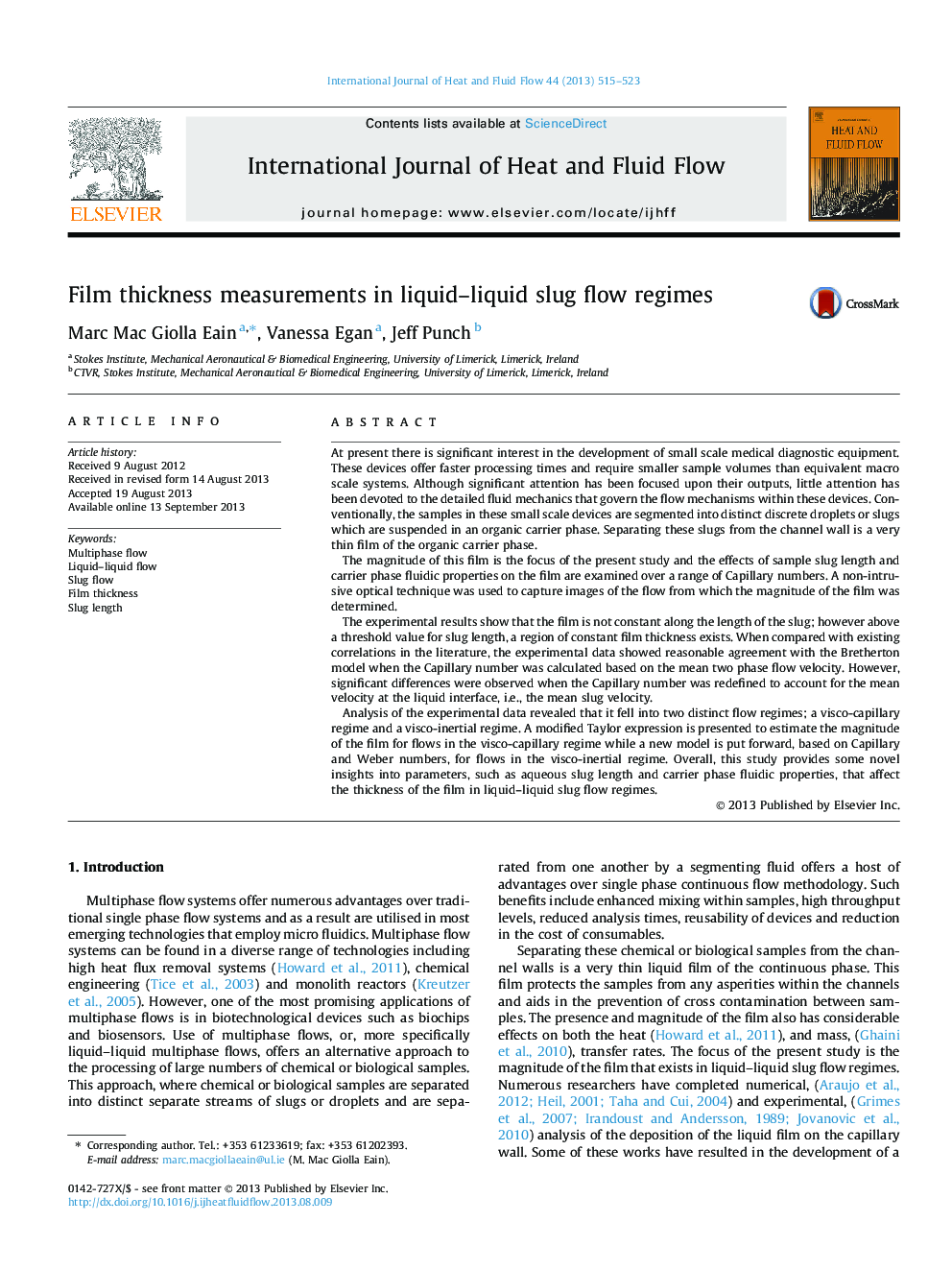| کد مقاله | کد نشریه | سال انتشار | مقاله انگلیسی | نسخه تمام متن |
|---|---|---|---|---|
| 655385 | 1457637 | 2013 | 9 صفحه PDF | دانلود رایگان |

• A direct measure of film thickness in liquid–liquid flows was taken.
• A region of constant film thickness is presents in slugs where LD⁎⩾1.86.
• Experimental data shows the dependency of film thickness on Capillary number.
• Expressions are presented to predict the magnitude of the film.
At present there is significant interest in the development of small scale medical diagnostic equipment. These devices offer faster processing times and require smaller sample volumes than equivalent macro scale systems. Although significant attention has been focused upon their outputs, little attention has been devoted to the detailed fluid mechanics that govern the flow mechanisms within these devices. Conventionally, the samples in these small scale devices are segmented into distinct discrete droplets or slugs which are suspended in an organic carrier phase. Separating these slugs from the channel wall is a very thin film of the organic carrier phase.The magnitude of this film is the focus of the present study and the effects of sample slug length and carrier phase fluidic properties on the film are examined over a range of Capillary numbers. A non-intrusive optical technique was used to capture images of the flow from which the magnitude of the film was determined.The experimental results show that the film is not constant along the length of the slug; however above a threshold value for slug length, a region of constant film thickness exists. When compared with existing correlations in the literature, the experimental data showed reasonable agreement with the Bretherton model when the Capillary number was calculated based on the mean two phase flow velocity. However, significant differences were observed when the Capillary number was redefined to account for the mean velocity at the liquid interface, i.e., the mean slug velocity.Analysis of the experimental data revealed that it fell into two distinct flow regimes; a visco-capillary regime and a visco-inertial regime. A modified Taylor expression is presented to estimate the magnitude of the film for flows in the visco-capillary regime while a new model is put forward, based on Capillary and Weber numbers, for flows in the visco-inertial regime. Overall, this study provides some novel insights into parameters, such as aqueous slug length and carrier phase fluidic properties, that affect the thickness of the film in liquid–liquid slug flow regimes.
Journal: International Journal of Heat and Fluid Flow - Volume 44, December 2013, Pages 515–523